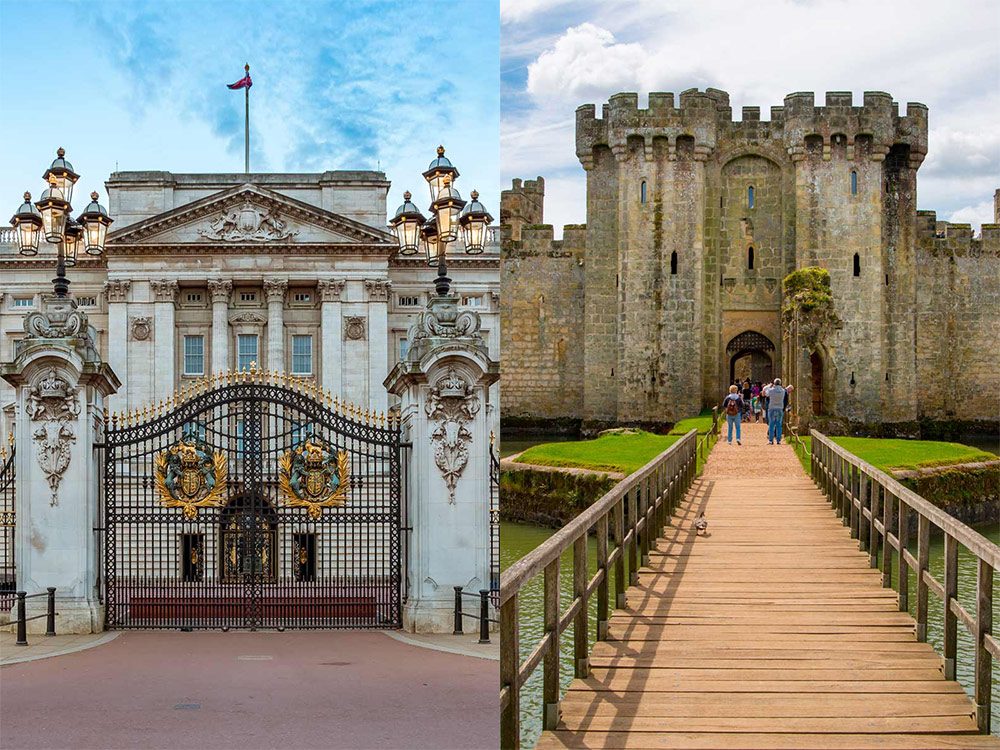What’s the Difference Between a Castle and a Palace?
Ask a child where a king and queen live, and they're likely to say a castle or a palace. But what's the difference between the two? Here's how to tell them apart.

First, where do the terms come from?
The word “castle” comes from the Anglo-Norman French word castel, which itself derives from the Latin word meaning “fort.” A castle is a fortified dwelling. In other words, there are many kinds of fortifications built for defense, but a castle is specifically used as a residence, as well. In medieval times, castles were usually occupied by someone highborn, such as a lord, knight or monarch.
The term “palace” comes from Rome’s Palatine Hill, where the rich and famous built their sumptuous homes in Roman times. So when we’re wondering what’s the difference between a castle and a palace, the most important difference is that a palace is not fortified.
What are the characteristics of a castle?
Castles, as we know them, began to be built in the eleventh and twelfth century, although often based on existing fortifications. Because they were built for defense, castles are usually built of strong stone. They’re located where they can be easily defended, such as on a high hill or protected by a river to prevent invasion from the enemy. They’re designed to make entry extremely difficult.
Castles were often surrounded by a moat to make tunnelling during a siege impossible. There are often walkways and crenellations on the roof for soldiers to patrol, and windows are narrow to allow archers to fire out at the enemy without risking their own safety.
The main gate is strongly defended, often with a drawbridge and portcullis, with openings for soldiers to pour boiling oil and other such nasty deterrents on invading troops. And, the main gate often led into an interior courtyard where the incoming troops could be trapped.
Spiral staircases were specifically designed to wind clockwise, allowing defenders to use their strong right arm freely while forcing attackers to use their weaker left arm. And, they often had uneven steps to trip up opponents.
What are the characteristics of a palace?
In a word, luxury. Palaces were often intended to show off the wealth and opulence of the residents, so they were built to impress. For example, the Palace of Versailles in France boasts 2,300 rooms, while Buckingham Palace has “only” 800.
Palaces were usually imposing, and often filled with priceless artwork, furniture and other accessories that also emphasized the wealth of the residents. As well as the building itself, palaces were often famed for their beautiful gardens, many of which survive to this day.
The earliest surviving palace is believed to be the Palace of Knossos on Crete, which dates back to around 1950 BCE, making it almost 4,000 years old!
Take a look at the amazing Game of Thrones castles you can visit in real life.



